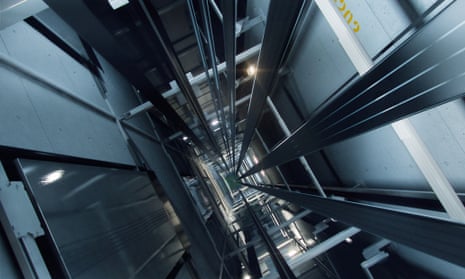Leading Lift Companies in London: Delivering Exceptional Solution and Support
Leading Lift Companies in London: Delivering Exceptional Solution and Support
Blog Article
Unraveling the Complexities of Lift Technology: Troubleshooting Common Problems Throughout Lift Versions
From slow-moving operation issues to peculiar sounds emanating from the machinery, repairing typical issues across different lift designs demands a keen eye for information and a methodical method. Stay tuned as we navigate via the maze of lift breakdowns, seeking remedies to the enigmatic issues that can interrupt the smooth performance of these crucial apparatuses.
Identifying Slow Operation Issues

Following, inspect the electrical connections to make certain that all components are correctly attached and functioning. Malfunctioning wiring or loose links can bring about slow down operation or full malfunction of the lift system. Additionally, it is important to test the control system to identify if the issue hinges on the programming or sensors.
If the aesthetic evaluation and electric checks do not reveal the source of the slow operation, more diagnostic tests might be essential. These might include pressure tests for hydraulic systems, voltage examinations for electric components, or running diagnostic software for the control system. repair and maintenance services. By following a systematic approach to fixing slow procedure concerns, you can effectively resolve the issue and recognize, ensuring the lift runs safely and effectively
Addressing Strange Noises
To properly fix lift modern technology for weird sounds, a complete assessment of the lift elements complying with the identification of slow operation concerns is essential. Odd sounds in lifts can be a measure of underlying issues that call for timely attention to ensure the security and integrity of the system.
Moreover, it is crucial to describe the lift producer's maintenance guidelines and seek assistance from qualified specialists when managing complex lift elements or strange troubleshooting procedures. By without delay dealing with and attending to weird noises underlying issues, lift operators can guarantee the ideal efficiency and safety and security of the lift system for travelers and operators.
Managing Faulty Control Issues
An efficient technique for addressing defective control troubles in lift modern technology entails carrying out an extensive assessment of the control system's elements and performance. When running into concerns with lift controls, it is essential to initial check for any kind of loosened links, damaged circuitry, or malfunctioning sensors. Confirming that all control display screens, keypads, and switches are functioning appropriately is also crucial in detecting the trouble accurately.
If no noticeable problems appear, professionals need to continue to inspect the control panel for any kind of indicators of water rust, getting too hot, or damage, as these can commonly result in regulate breakdowns. Additionally, resetting the control system or upgrading the software application may aid resolve certain glitches or pests creating the issue.

Taking On Hydraulic System Malfunctions
The efficiency of hydraulic systems in lifts counts greatly on the appropriate performance of different components within the system. When hydraulic systems breakdown in lifts, it can lead to functional disruptions and see post safety issues.
An additional frequent hydraulic system malfunction is a loss of pressure, which can result from air entering the system, liquid contamination, or pump ineffectiveness. Specialists can resolve this by bleeding the system to eliminate air, changing contaminated liquid, or servicing the pump as needed. In addition, abnormalities in hydraulic fluid levels or uncommon noises throughout lift operation may suggest underlying system breakdowns that need immediate focus to stop further damages. Normal maintenance and prompt troubleshooting of hydraulic system issues are vital to making sure the safe and effective operation of lift innovation.
Dealing With Electrical Element Failures
Resolving electrical part failings in lift technology necessitates an organized technique to detecting and settling problems to maintain operational functionality and safety and security standards. When experiencing electrical issues in lift systems, it is critical to very first carry out a detailed inspection of the electrical components, consisting of control board, electrical wiring, sensing units, and circuit boards. Any indicators of damages, deterioration, loose links, or burned components must be meticulously kept in mind and dealt with immediately to avoid additional problems.
When it comes to electrical part failures, it is important to follow manufacturer guidelines for repairing and fixing treatments. This might entail testing the components utilizing multimeters, oscilloscopes, or other diagnostic tools to identify the precise resource of the malfunction. Additionally, having a comprehensive understanding of the lift's electrical schematics and circuitry layouts can assist in identifying and fixing problems successfully.
Regular upkeep and inspection routines can help protect against electrical failures by detecting possible problems beforehand. Appropriate training for lift service technicians on electric systems and parts is likewise vital to make sure accurate diagnosis and reliable resolution of electric troubles, inevitably adding to the total safety and integrity of lift operations.
Conclusion
In final thought, troubleshooting lift technology needs an organized approach to identify and address usual problems such as slow-moving operation, strange sounds, defective controls, hydraulic system malfunctions, and electrical element failings. By recognizing the complexities of lift technology and complying with proper repairing actions, specialists can properly fix issues and ensure the risk-free and efficient operation of lifts across different models.
To efficiently troubleshoot lift modern technology for unusual noises, a thorough examination of the redirected here lift components following the recognition of slow-moving procedure issues is vital. Odd noises in lifts can be a measure of underlying troubles that call for timely focus to ensure the safety and security More Info and reliability of the system.An efficient approach for dealing with defective control problems in lift technology includes performing an extensive assessment of the control system's components and performance.The performance of hydraulic systems in lifts counts heavily on the appropriate functioning of numerous elements within the system. repair and maintenance services. When experiencing electrical problems in lift systems, it is critical to initial carry out a thorough assessment of the electric components, including control panels, circuitry, sensing units, and circuit boards
Report this page